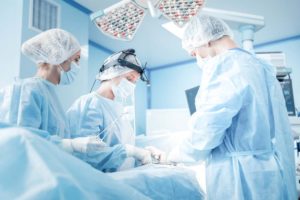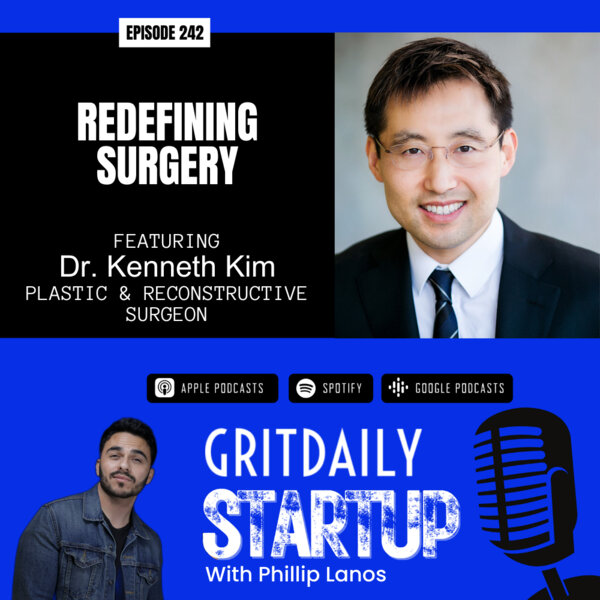 One of the most important aspects of Dr. Kim’s approach is to operate within a tissue layer that glides or separates easily. Our body is made up of layers and there are certain layers that glide with relative ease. In these gliding planes, there are significantly less blood vessels and nerves. The problem of finding this gliding plane is that it is so thin for our eyes to see.
One of the most important aspects of Dr. Kim’s approach is to operate within a tissue layer that glides or separates easily. Our body is made up of layers and there are certain layers that glide with relative ease. In these gliding planes, there are significantly less blood vessels and nerves. The problem of finding this gliding plane is that it is so thin for our eyes to see.
Dr. Kenneth Kim has developed a method where he delivers energy to drive fluid to find this gliding plane. Fluid always egresses to the area of least resistance. You can demonstrate to yourself by pouring water on a counter. The water will migrate to various areas and dissipate. The force in this situation is gravity. In surgery, Dr. Kim delivers special energy that will drive the fluid to move forward and locate the gliding plane. Dr. Kim will then follow the fluid path and operate within this exact gliding plane. Again, it is important to understand that this gliding plane cannot simply be opened up because the layers separating this plane is so thin and not linear, as the body does not follow a straight line. By staying perfectly within this tissue plane, there is minimal tissue damage and disruption to the blood vessels. Thus, changes in hemodynamics are minimized. Hemodynamics is the study of the movement of blood throughout the circulatory system, and the speed and pressure at which it moves throughout blood vessels. Not damaging or not losing blood flow to skin and subcutaneous tissue allows maintenance of healthy tissue as one ages. In addition, optimal blood flow to tissues minimizes postoperative infection and optimizes tissue healing as it maximizes nutrition and oxygen delivery. An example to better illustrate the importance of maximum blood flow is by looking at the opposite as is the case with severe diabetes. People with severe diabetes have poor blood supply/narrowing of blood vessels. This makes them more susceptible to infection and prone to poor wound healing/scarring.
Less blood staining (from not cutting blood vessels) in the treatment area allows Dr. Kim better visibility as he operates. Blood stains the surrounding tissues during surgery and can make it difficult to distinguish important anatomical landmarks and structures. Poor visibility during surgery is the main cause of surgical error. For example, driving with poor visibility due to snow and fog will increase the risk of accidents. Surgery is no different. Once the blood leaves the blood vessels, it stains the surrounding area and makes various structures indistinguishable.
In addition, decreased blood loss allows for faster recovery as the patient is not tired from unnecessary blood loss. Whenever there is blood loss, we experience fatigue as our key organs such as the heart, lungs, and brain receive less oxygen and nutrients. With Dr. Kim’s approach, the patient’s physiology is not altered during surgery and blood flow remains consistent. Therefore, following surgery, the patient is not fatigued and will feel the same as before surgery.
Again, the key factor of accomplishing minimal blood loss is staying within the gliding plane. During procedures that require manipulating the underlying layers of tissue, such as facelifts, there are several different “planes” in which a surgeon can work in order to make the necessary adjustments. Ideally, the surgeon should work in the layer of tissue without major blood vessels in order to avoid severing them during surgery and prevent blood loss altogether. Dr. Kim’s expertise allows him to locate and operate within these crucial layers of tissue. The way a patient can determine whether proper surgery with minimal to no blood loss was performed is by taking note of postoperative bruising and the speed of recovery. Bruising indicates broken blood vessels and staining of tissue while increased postoperative swelling demonstrates excessive inflammation. If surgery is done with the bloodless technique, the patient will have minimal bruising and swelling.




 Bloodless surgery is a ground-breaking approach to surgery that improves the quality and safety of the procedure being performed. Avoiding blood loss during surgery reduces stress on the patient’s body and increases the visibility of the area for the surgeon. Both of these advantages result in a more efficient and effective surgery with less discomfort and a dramatically shorter recovery. Dr. Kenneth Kim has pioneered this technique during his impressive medical career, during which he has implemented countless other valuable techniques in order to offer patients procedures and results that are unattainable at other surgical practices.
Bloodless surgery is a ground-breaking approach to surgery that improves the quality and safety of the procedure being performed. Avoiding blood loss during surgery reduces stress on the patient’s body and increases the visibility of the area for the surgeon. Both of these advantages result in a more efficient and effective surgery with less discomfort and a dramatically shorter recovery. Dr. Kenneth Kim has pioneered this technique during his impressive medical career, during which he has implemented countless other valuable techniques in order to offer patients procedures and results that are unattainable at other surgical practices. 










